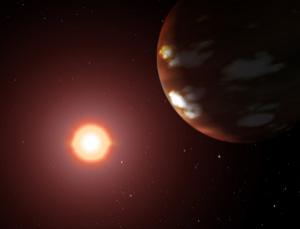Newly-discovered asteroid
2009 DD45 is about to fly past Earth only 72,000 km (0.000482 AU) away. That's about twice the height of a typical geostationary communications satellite. The 30- to 40-meter wide space rock is similar in size to the
Tunguska impactor of 1908, but this time there is no danger of a collision. At closest approach on March 2nd, around 1340 UT (5:40 am PST), 2009 DD45 will speed through the constellation Virgo shining as brightly as an 11th magnitude star. Experienced amateur astronomers can track the asteroid using
this ephemeris.
Update: Using a 14-inch telescope at the University of Nariño Observatory in Columbia, Alberto Quijano Vodniza has photographed the asteroid streaking toward Earth thirteen hours before closest approach:
1 MB movie.
